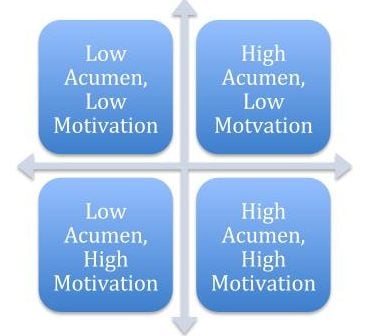3 Ways to Drive Your Clients to Take Action
Share this
A couple came to you to get some financial advice. They are in their early thirties; both make good income and are expecting their first child. They’re not sure if they’re saving enough and how they should save.
Based on basic demographics, they are your perfect clients.
Now imagine two scenarios:
In the first one, you recommended comprehensive financial planning. You discussed their goals through in-person interview and collected all the financial documents.
You fed all the information through a sophisticated planning software and came up with a great plan that will meet their goals, telling them exactly what they should do.
The clients happily paid the sizable planning fee, studied the plan from front to back, asked many relevant questions, and told all their friends about your excellent service.
They behaved like every great client did, except for one thing – after one year they did exactly nothing on the carefully prepared action list.
In the second scenario, the same clients walked in. You did none of what a good planner should do – listening, analyzing, and educating.
You offered the clients only one thing – they can sign the paperwork right now to automatically transfer 30% of their paycheck every pay period and invest it in a low-cost target date fund that matches the timeframe when they need the money.
And they did, without a well-crafted plan telling them how much and what type of account they should use.
In which scenario do you think the clients benefit more from your advice after a year?
Neither is ideal, but I’d argue the second scenario is preferable. All the intellectually challenging planning exercises mean nothing for our clients if they don’t implement anything. It’s imperative that we as planners help our clients carry out our recommendations. After all, it’s one of the six steps in the financial planning process.
How Can You Inspire Clients to Take Action?
For Gen X and Gen Y clients, comprehensive planning is not just investment planning done in a comprehensive way. Comprehensive planning is everything related to their personal finance.
Implementing the recommendations for most areas of personal finance require the clients to take the initiative. You can’t call their mortgage provider, bank, student loan servicer, or employer HR directly to facilitate those changes you suggested. Your clients have to at least make the first step to involve you in the conversation if allowed.
But their life, fear, or procrastination often gets in the way.
Having served young clients for the last three years under a monthly retainer model, I now focus my a significant part of my financial planning process on helping them take action, evaluating their progress, and evolving my recommendations based on what they actually implemented.
It may not be the most intellectually stimulating aspect of financial planning, but it’s the most rewarding because I get to see behavioral change. No matter the fifth step of financial planning process is part of your job description or not, we should all agree that our clients are better off if they just implement our recommendation already!
So next I’m going to share with you some of the strategies I use to drive clients to take action.
Evaluating Client Types
But before I go into how I help clients take action, I’d like to introduce three different client types based on two dimensions – client’s financial acumen and motivation level.
Depending on what the particular clients are like, certain strategy might benefit them the most. Below are the categories:

#1: High Motivation, High Acumen
These may be the most desirable clients, because they usually take you the least amount of time to maintain the relationship. Once you tell them what to do and explain your rationale, they need very little help or push to go and implement your suggestions.
They know how to shop for mortgage, open an account online, and find the right person to resolve their issues. You can tell them to open an IRA and rollover an old 401(k), and it will be done by the next time you talk to them without hiccup.
Most of the time these clients came to you because they need confirmation and a trusted information source. They generally know the prudent thing to do – save more, spend less, invest in index fund – but they may not have time or the energy to research all the info and make decisions.
You as a trusted advisor help them cut through the noise and go directly to implementation.
#2: Low Acumen, High Motivation
These are clients require more handholding. They are usually excited to finally work with an advisor, but have a fear about dealing with anything related with money.
They worry more about doing something wrong. If you suggest to them opening a high-yield online savings account, and give them a list of reputable options, they will ask for a particular bank, what your experience with the bank is like, step-by-step instruction on how to open and link the account, and maybe 10 other questions.
This type of client is never comfortable doing these things on their own, and that’s one of the reasons they hired you – to help them become more comfortable.
They also trust you more on the outset because they don’t feel they know enough to judge your recommendation. But they have a lot of room to grow and become educated in financial matters, if you give it time.
#3: High Acumen, Low Motivation
We all have this type of client. They seem like perfect clients on paper, but they’re not motivated to actually implement anything. Sometimes it makes you wonder why they came to you in the first place.
Well, they came to you because they need you to keep them on track! They know how to make all the basic financial decisions. They may even be finance professionals who know about investment theories.
They just don’t actually make changes even after they’ve sought advice.
The true reason behind this reluctance to actually do something may differ by person. For some it may be personality, and for others there may be some emotional, family or relationship issues at play.
In my opinion, this type of client can benefit the most from working with an advisor, if we design a process to discover what impedes them and help them take action.
#4: Low Acumen, Low Motivation
I’m skipping this category since it’s less likely people in this category would seek out advice in the first place. If you have this type of client, I’d be interested to hear from you!
Useful Strategies for Motivating Your Clients
So what can you do in your comprehensive planning process to help these different types of clients? Here are some of the things I do:
#1: Collaborative Task Management System – Good for High Acumen, Low Motivation Clients
Once I present the initial planning strategy and the action steps for the next 12 months, I enter all our collective action steps in the task management system in RightCapital, which is also the planning platform that I use.
I will put deadlines for every task, and space them out properly so they don’t overwhelm clients all at once. The system automatically sends out a notification email to client two weeks before the task is due, and follows up again in one week and the day before.
Clients have no excuse for saying they don’t remember to do things.
I noticed this helps particularly with those with low motivation. Multiple notifications give them a sense of urgency to get on a task. And the best part about it is I don’t need to actively chase them down!
System-generated emails also create a distance between clients and I so they don’t feel like I am nagging. Once clients accomplished the task, they check it off to let me know it’s taken care of, and I got a notification.
If several due dates have passed and I’ve heard nothing, I can either follow up directly or move the due dates back further so they keep getting subtle push to take action.
You may also want to check out task management apps like any.do, which is designed for people to collaborate and keep all parties updated when due dates are near. That’s exactly the spirit – ongoing financial advice is a collaborative effort, so you need to have a system to keep everyone in the loop.
To be more inventive, you may even look into using a system that allows automatic texts or push notification on smartphones so important tasks get their attention.
#2: Detailed Instruction Templates – Good for Low Acumen, High Motivation Clients
When “high motivation, low acumen” clients get a task notification, usually I will get an email saying, “I’m not really sure how to proceed. Can you help me?”
After answering a few of these emails, I began to accumulate templates that I can use in similar situations, because inevitably, many of my clients in this category have similar questions.
For example, where do I go to change TSP allocation, how do I figure out the best W-4 withholding, and how do I report it to my HR?
Due to the fact that I work with many federal employees (and I’m married to one), I know exactly how to walk them through the process so they don’t succumb to frustration and give up.
You will find that having a niche market is very helpful in this regard. Soon you will have a sizable FAQ library you can pull from the help this type of clients actually take action instead of standing on the sideline.
They are great clients once they score small victories of actually knowing how to do things, such as navigating their HR system. Once they are comfortable with that, they are more likely to want to take further steps, such as going through the medical underwriting process to get life insurance, or opening an investment account online and place a trade.
#3: Share Long-Form Content and Stay Transparent with Processes – Good for High Acumen, High Motivation Clients
Sometimes I also get emails from clients with questions like, “I don’t remember why this is a good idea. Can you explain it to me again?”
In other words, what they really want is to learn how to make good financial decisions on their own.
It can be time-consuming to try and reinvent the wheel every time to explain more advanced concepts, such as why you think buying index fund is better than an actively managed fund.
If you’re already blogging, having some kind of long form content you can point people to can be highly efficient. If you are not producing any content on your own, keeping a library of reputable third-party resources is also a good idea.
You can quickly answer their “why” and get them to take action faster.
With High Acumen clients, I also tend to walk them through my decision-making process in more detail, or even give them a couple of options to choose from so they can practice exercising their own judgment.
Again, it’s a collaborative process. Some of our advice is not that clear cut.
For example, the clients may be earning income above Roth IRA limit. They can contribute to Traditional IRA and do a Roth conversion every year, but it takes them time to keep track, find out how to do it with their custodian, communicate it with their tax professional, or even figure out how to report it on their own.
Or they can just save in a taxable account, pay a little bit more taxes to skip the headache, given they have a goal requiring them to take the money out in 5-10 years anyway.
Both are valid options, and it’s our job to walk them through the decision process.
Having this type of discussion can help clients grasp your rationale and come to a decision on their own so they can become more effective and confident in dealing with their finances. Don’t worry about them leaving you because they are now better at managing their household finances.
In reality, the opposite happens: clients stay because you are such an effective filter and educator that helps them form their own opinion without wasting time and energy.
The Real Value of a Financial Planner
Financial planning is an ongoing process. We all know this. Without collaborative strategies to help clients implement and monitor their progress, we will not be able to truly make it an ongoing relationship.
I firmly believe that my value as a financial planner comes from not just making complicated financial matter simple, but also helping clients take action and make better decisions.
I encourage you to review your process to see how much effort you actually put toward changing client behavior, inspiring clients to take action, and how much your clients have actually changed.
You may worry that you don’t have enough time to do this extra work to make it profitable. Why not train a part-time staff or outsource it?
Helping clients implement may not be your main skillset, but you can add value by hiring someone else to follow up and guide your clients in the right direction. For larger firms, you may even be able to have a full-time Client Monitoring Specialist to help clients implement your recommendation beyond taking their asset under management.
Of course, you may simply focus your practice on the High Acumen, High Motivation clients. Nevertheless, I do derive much more satisfaction on seeing the clients from the other two categories grow.
The idea is that the longer they work with you, the more they mature and become High Acumen, High Motivation clients. It’s not a model for everyone, but it’s so worth it to see progress!
Although I assigned one strategy to each type of client, in practice I use all three strategies on all clients because they are baked into my financial planning process. High Acumen clients can have questions about how to place a trade, while Low Acumen ones also care why you make certain recommendations.
And don’t forget: gentle nudges from the task management system can be effective on all types of clients.
I still remember the excitement when I first got the notification that clients are checking off their tasks, and I still experience it every day. I’ve got great feedbacks from clients saying these strategies have made them more on track, more comfortable, and better at decision making. I hope you will try them out too!

About the Author
Hui-chin Chen is a Certified Financial Planner™ and a globetrotter. She specializes in helping fellow globally mobile professionals manage their resources effectively so they can live their lives to the fullest. She blogs about global living and financial planning at Money Matters for Globetrotters. Hui-chin is also the Co-Owner of Pavlov Financial Planning based in Arlington, Virginia. As the name of the firm suggests, she focuses her practice on generating true behavioral change.
Share this
- Fee-only advisor (381)
- Advice (305)
- Business Development (248)
- Independent Financial Advisor (203)
- Growing Your Firm (161)
- Marketing (133)
- Financial Planning (129)
- What Would Arlene Say (WWAS) (81)
- Business Coach (80)
- Firm Ownership (78)
- Training (75)
- Compliance (72)
- Business (69)
- Building Your Firm (65)
- Financial Advisors (63)
- Online Marketing (61)
- Events (59)
- Starting a Firm (52)
- Staffing & HR (49)
- Technology (49)
- From XYPN Members (48)
- Launching a firm (46)
- Advisors (41)
- Entrepreneurship (38)
- Taxes (37)
- Networking & Community (33)
- Interviews and Case Studies (32)
- Investment Management (31)
- Sales (27)
- Social Responsibility (27)
- Tax Preparation (27)
- XYPN Invest (26)
- Business Owner (25)
- Small Business Owner (20)
- Financial Management & Investment (19)
- Industry Trends & Insights (19)
- Financial Education (17)
- Financial Planners (17)
- Independent Financial Planner (17)
- Tech Stack (17)
- XYPN (17)
- Leadership & Vision (16)
- Investing (15)
- Niche (15)
- How to be a Financial Advisor (14)
- NextGen (14)
- RIA (14)
- Media (13)
- Preparing to Launch (13)
- Press Mentions (13)
- RIA Operations (12)
- RIA Owner (12)
- XYPN Membership (12)
- Assets Under Management (AUM) (11)
- First Year (11)
- Goals (11)
- Scaling (10)
- Advisor Success (9)
- Building Your Firm (8)
- Communication (8)
- Lessons (8)
- Study Group (8)
- Time Management (8)
- Virtual Advisor (8)
- Behavioral Finance (7)
- Growth (7)
- Pricing Models (7)
- From Our Advisors (6)
- Independent RIA (6)
- Money Management (6)
- Motivation (6)
- Processes (6)
- Automation (5)
- Broker-Dealers (5)
- College Planning (5)
- Filing Status (5)
- How I Did It series (5)
- Investment Planner (5)
- Mental Health (5)
- Michael Kitces (5)
- Preparing to Launch (5)
- RIA Operations (5)
- Retirement (5)
- Risk and Investing (5)
- S Corpration (5)
- Support System (5)
- TAMP (5)
- Wealth (5)
- Year-End (5)
- Client Services (4)
- Outsourcing (4)
- Selling a Firm (4)
- Succession Plans (4)
- Benchmarking Study (3)
- Budgeting (3)
- Career Changers (3)
- Engagement (3)
- Fiduciary (3)
- Getting Leads (3)
- Membership (3)
- Millennials (3)
- Monthly Retainer Model (3)
- Partnership (3)
- Pricing (3)
- Recordkeeping (3)
- Risk Assessment (3)
- Small Business (3)
- Staying Relevant (3)
- Work Life Balance (3)
- Advice-Only Planning (2)
- Bookkeeping (2)
- Charitable Donations (2)
- Client Acquisition (2)
- Differentiation (2)
- Health Care (2)
- IRA (2)
- Inflation (2)
- Productivity (2)
- Implementing (1)
Subscribe by email
You May Also Like
These Related Stories

How to Provide Philanthropic Planning in Seven Easy Steps

5 Places to Look for and Find Your First Clients



